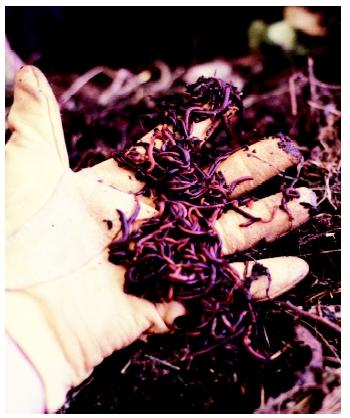Organic Agriculture
Organic agriculture uses the principles of diversity and nutrient cycling found in nature to raise crops and livestock. All kinds of food are grown using organic practices, from fruits and vegetables to grains and dairy products. Organic agriculture is popularly understood to mean farming without the chemical herbicides and pesticides used in conventional agriculture. Just as important are the techniques used by organic growers that make chemical use unnecessary. These include intelligently managing the agroecosystem by using crop rotation, cover crops, and tillage.
Principles of Organic Agriculture
Crop rotation means growing a different crop in a field each year. When the same crop is grown year after year in an artificial monoculture , a habitat is created for weeds, pests, and diseases that attack that crop. Organic growers imitate the complexity found in nature by changing the crops grown in a field from year to year. Rotation continually disrupts pest habitat and reduces weeds and diseases.
Crop yields also increase because of the "rotation effect." A basic two-year rotation involves alternating a grass family crop such as wheat or corn

Many organic growers use more sophisticated four- to eight-year rotations carefully designed to optimize yield and the ecological function of each crop. Often, the complexity of such an organic system is similar to the complexity found in nature, and weeds, insects, and diseases are almost eliminated from the system.
Using cultural control of pests rather than chemical control makes organic farming better for the environment and for wildlife.
Organic farmers will often plant a cover crop in the fall that protects the soil from wind and rain erosion during the winter. Usually the cover crop will provide other benefits as well. If the cover crop is a member of the bean plant family (a legume), it will bring nitrogen into the soil that will be available for the next crop to use. If the cover crop has allelopathic, or toxic, properties, as does rye, it can help control weeds.
From handheld hoes to tractor-pulled cultivators, organic farmers use a wide range of cultivation equipment to control weeds during the growing season. All of these implements operate on the same principle: drag weeds out of the soil onto the surface to dry out and die.
Commercial Organic Farming
A national law provides a set of standards that farmers in the United States must follow in order to sell what they grow as "organic." Organic growers must be certified, or have their farming practices verified by an application and inspection process, every year in order to sell into the organic market.
Increasing awareness of the pesticides used in conventional farming has made many people decide to buy organic food. Because of increased labor costs in organic farming, organic produce may be priced higher than conventional produce. Farmers' markets and roadside stands are places where consumers can purchase organic produce directly from the growers and eliminate retail mark-up costs.
Since the mid-1990s, sales of organic products have increased by at least 20 percent every year. Between 1995 and 1997, certified organic acres in the United States increased by 47 percent, making organic agriculture the largest growing segment of U.S. agriculture.
SEE ALSO Agriculture ; Agronomist ; History of Agriculture ; Nitrogen Fixation
Jane Sooby
Bibliography
Howard, Albert. An Agricultural Testament. New York: Oxford University Press, 1943. Reprint, Kutzton, PA: Rodale Press, 1979.
Magdoff, Fred, and Harold van Es. Building Soils for Better Crops, 2nd ed. Beltsville, MD: Sustainable Agriculture Network, 2000.
National Research Council. Alternative Agriculture. Washington, DC: National Academy Press, 1989.
Comment about this article, ask questions, or add new information about this topic: